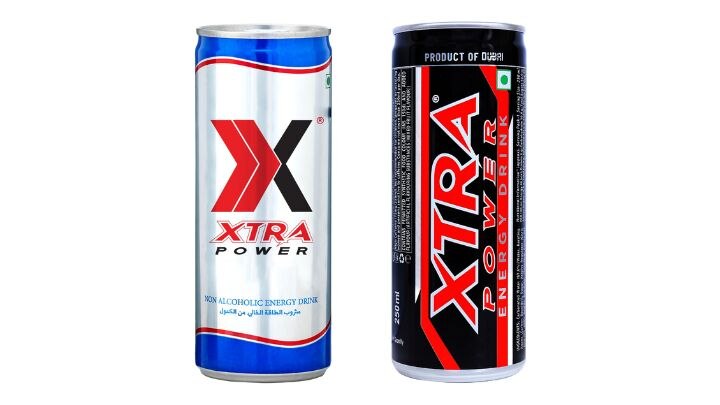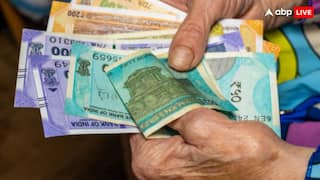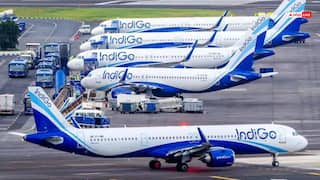Xtrapower Energy Drink: The Brightest Star Of Beverage Industry
There is a wide awakening and growing inclination towards health and wellness and it will keep evolving for at least 3 to 4 more years.

New Delhi (India), March 29:
- The future of the beverage Industry in India
India's non-alcoholic beverages market is expected to grow to Rs 1.47 trillion by 2030at a compound annual growth rate (CAGR) of 8.7%, from around Rs 67,100 crore in 2019, the Indian Council for Research on International Economic Relations (Icrier) said in a detailed analysis. So, if you are curious about future trends in the food and beverage industry in 2022, know that they will bear a clear signature of a health-conscious society. There is a wide awakening and growing inclination towards health and wellness and it will keep evolving for at least 3 to 4 more years.
- Why Indian beverage industry moving towards green packaging?
In addition to reducing your carbon footprint and environmental impact, green packaging has positive long-term effects even after it's used for shipping. These alternative sustainable materials are biodegradable and recyclable, making their impact on the environment minimal.
Plant-based plastics, recycled paper, and reused polyethene (PE) bags are some of the common materials used for producing green packaging. The India green packaging market is expected to exhibit a growth rate (CAGR) of 7.24% during 2023-2028.
- Services, products, dedication: how India's food & sector is building resilience, innovation, and global trust?
This calls for promoting innovations for increased efficiency; enhancing inclusiveness and resilience of food supply chains; ensuring food safety and nutritional quality of diets; reducing food loss and waste; [taming] and strengthening agri-food enterprises; and fostering investment in the green recovery of food value.
With innovation comes opportunities to grow and expand into new markets. The process allows businesses to gain a competitive advantage over competitors as it allows you to better your products and services for your customers.
Amid all the disruption and uncertainty, people are more than ever looking for institutions they can trust. Food and beverage companies, which provide essential services, are in the spotlight. How these businesses emerge from the pandemic and deliver against their consumers’ and stakeholders’ high expectations now, and in the coming months, will define their license to operate in the future.
- Briefly describe the brand's USP
Xtra Power Classic is the finest taste of energy drink. We developed this with the best ingredients from Germany. It contains Caffeine, Taurine, and Vitamins (B2, B3, B6 and B12). Our Xtra Power Classic provides you with an extra boost in energy. We developed Xtra Power Classic who wants to have a clear and focused mind.
- What are the key products services of the company? Kindly elaborate
ENERGY DRINK
We can help you with standard and unique private-label energy drinks. We have ready ingredients to produce energy drinks. We can help to design your artwork and packaging.
VITAMIN DRINK
You can choose a standard product or develop unique taste formula for your drink. Packaging starts from Glass, PET, and Aluminum cans.
BADAM DRINK
We have different types of flavours in Badam Drink. We are developing a unique taste for your brand. Packing will come in Steel cans. Children also can consume this product.
ENERGY SHOT
It becomes the next start of the drink industry. We create a formula for the unique concept of your drink. We have multi-hour energy shots for your private labelling
- What are the 2023 Flavour trends for food and beverage?
Beverage Trend 1: Mix and Mingle
Adventure and indulgence have taken on a new meaning in today’s uncertain economy. Consumers want achievable excitement and playfulness from their beverages, which is spurring unlikely combinations like spicy habanero and sweet mango, mashups of familiar drinks, fusion cuisines and unconventional flavour pairings.
Market example: A canned mango habanero agua fresca made with real fruit.
Beverage Trend 2: Off the Reel
Social media and the emphasis on visual currency have influenced food and beverage trends at a rapid pace. New recipes and over-the-top beverage creations dressed up with abundant inclusions and toppings – such as vibrant glitters and sprinkles – have an element of familiarity that attract consumer curiosity.
Market example: A gin with glitter, perfect for festive nights and impressive cocktails.
Beverage Trend 3: Maximizing Taste
With technological refinement in taste and texture, consumers expect healthy, nutritious, better-for-you and sustainable alternatives to deliver the same taste experience and flavour intensity as mainstream food and beverages.
Market example: A prickly pear-flavoured non-carbonated drink made with cactus water.
Beverage Trend 4: Joy in Simple Things
In a fast-paced culture, the simplicity of familiar and comforting flavours continues to bring joy to consumers. While simple flavours thrive in a recessionary environment, nostalgia, comfort and familiarity drive an everlasting appreciation for simple things.
Market example: Ready-to-drink iced coffees showcasing indulgent classics such as cake batter doughnuts, coffee cake muffins and brownie batter doughnuts.
Beverage Trend 5: Roots and Origins
Age-old practices, ingredients and recipes are experiencing a revival. Origin stories and lost traditions are finding a new home amid the post-modernization of food coming full circle to authentic and wholesome experiences.
- How technology is creating a wide scope …
Over the years, food manufacturers and restaurants have embraced technology to enhance productivity, efficiency, food quality, and customer experiences. Popular technologies revolutionizing the food and beverage industry include 3D printing, data analytics, precision agriculture, GMOs, and robotics.
- What are the future trends of India's Non-alcoholic Beverage Market?
India’s non-alcoholic beverages market may expand at a compound annual growth rate of 8.7% to reach₹1.47 a trillion by 2030, according to a new report. In 2019, the size of the overall beverages market that includes carbonated soft drinks, juices, bottled water, and fruit-based beverages was₹67,100 crore, the report from economic policy think tank ICRIER said. While carbonated soft drinks (CSDs), ready-to-drink teas (RTDs), energy drinks, and sports drinks accounted for more than 60% of the global market, in India, carbonated beverages are the most popular, followed by bottled water, fruit beverages, and juices.
However, the report pointed to a shift in consumption patterns, indicating that CSDs are growing at a lower rate, while consumption across segments such as packaged water, sports drinks, and tea and coffee-based drinks is increasing.
“While the market share of CSDs is the highest, the highest socio-economic class A is moving away from the consumption of CSDs," the report said.
Between 2010 and 2019, India’s non-alcoholic beverages market grew at 14.5% in terms of total sales volume, and 13.72% in terms of total sales value. The market size was valued at $12.15 billion in 2019 compared to $3.5 billion in 2010.
“Existing companies are diversifying their product portfolio and many startups and small and medium-sized enterprises have entered this sector in the last 10 years. The survey found that 35% of the companies have introduced new products in the Indian market, which include zero-sugar or sugar-free products and other products like tea and coffee-based drinks, and organic drinks," the report said.
However, despite the size and scale of the market, India’s per capita annual sales at 21.36 litres in 2018 is much lower than per capita sales in other developing countries like the Philippines which stood at 111.89 litres and Vietnam at about 69.75 litres in the same year. Meanwhile, India’s revenue per person from the sale of such beverages was estimated at $8.89 in 2019, much lower compared to markets such as $1,030 in the US and $67.05 in China. The sector is also heavily taxed to deter consumers from excessive consumption of sugary beverages. Most non-alcoholic beverages are taxed at a standard rate of 12-18% or the highest rate of 28%.
- What are your expectations from the Indian market and consumers?
Revenue is expected to show an annual growth rate (CAGR 2023-2027) of 11.53%, resulting in a projected market volume of US$2,635.00m by 2027. As per the market size, there is a huge opportunity to expand in the Indian market. As a strategic plan, we would be getting into the Indian market with an affordable energy drink lag line where even ordinary people can have it without burning huge cash. Indian consumer stick to taste and when we give the best product at an affordable price we are confident that we can reach to a maximum consumer in India.
- Any expansion plan you are looking for future?
We also have a plan to come up with a premium energy drink soon, with the product which is the best product in this division. We also have the plan to come up with a Vitamin drink which has huge scope in the Indian market along with energy shots. Apart from India, we are all set to launch in all our neighbouring countries soon.



















